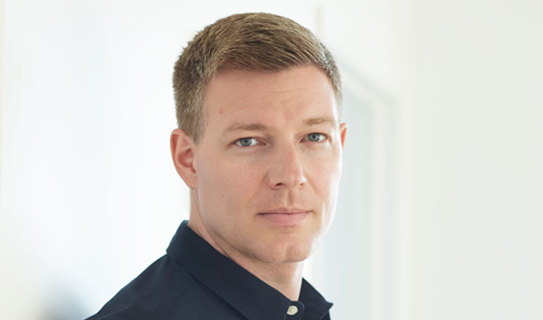Blog Archives
Joining Rohit Malhotra for the Indian Life Self Mastery Podcast
A conversation about the four steps of launching a brand, brand storytelling and my book Bigger Than This.
CATEGORIES:
Lessons in Marketing Through Empathy – From a Business That Serves Homeless And Millionaires Alike
In my latest book about turning ventures into brands, Bigger Than This, I cite a stunning 116 companies over the course of only 200 pages. Some are Fortune 100 conglomerates and consumer brands like Starbucks and Uber, but most are smaller ventures that lead with empathetic stories and created swift consumer admiration. I discovered many of them during my research for the book and am now reaching out to some of those that intrigued me particularly in order to learn more from their unique ways of using their brand story as their key differentiator in the marketplace.
One such venture is SAME Café. Seemingly just another small neighborhood café in Denver, Colorado, SAME Café boasts a big differentiator as it serves healthy food to anyone who pays or does not pay for the fare. More so, it attracts millionaires that dine on delicious, healthy fresh farm-to-table cuisine in a relaxed atmosphere next to someone less fortunate who are experiencing homelessness and stopped in to survive and keep on going through their rough days.
Obviously, there is a lot to be learned from this intriguing venture, so I reached out to Brad Allen Reubendale, the Café’s Executive Director, to see what any business leader and marketer can learn from his unique business model that is so deeply rooted in empathy. Many CEO’s and marketers throw the word empathy around just like other marketing buzzwords, but it’s time to actually listen and learn from a business that is using empathy not as a term, but as their brand’s underlying DNA.
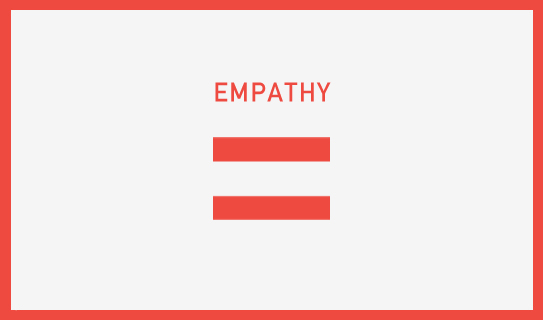
You can read my 3 key takeaways from my conversation with Brad in CEOWORLD Magazine, but below is the interview in its entirety. It’s hefty in size, but also in advice, so I recommend you don’t take the shortcut but instead dive right in – a few remarks are highlighted in red for you:
Fabian Geyrhalter: You’ve been with SAME Café for eight months. In that time, what have you learned about humanity?
Brad Reubendale: You know, I’m going to be completely honest, but it’ll sound cheesy. This has restored my faith in humanity in so many ways because this organization runs on goodwill and community involvement. I come from a nonprofit background where I was in a youth-serving homelessness organization, doing fundraising for them. So much of nonprofit work is asking people for money to do the mission. This is the first one I’ve ever seen where both wealthy folks and people that have a little extra, people who have a little less, all the way down to folks experiencing homelessness, everyone has something to contribute to the community and everyone is invested in this community. So, it’s not a stretch to say that this place really has restored my faith in community and humanity. I get to see, every day, people that are maybe millionaires sitting and eating alongside people that are experiencing homelessness. I’ve just never seen another context in which that happens. Our community, our culture does not facilitate conversation and connection between various socioeconomic groups. So, yeah, I would say that’s what I’ve learned about humanity in this process. Also, when I start getting a little overwhelmed, I begin to just look at all the goodwill that is fostered through this model. This model that doesn’t approach life from a scarcity perspective, that we don’t have it and need to get more. But, instead it approaches it from an abundance perspective that says, everyone has something to give and how do we create the environment in which everybody can participate and give in? When I start to get a little overwhelmed I look around and see all this incredible love and support around me and I’m like, okay, I’ve got this. We have this as a team. No one person has to make everything happen.
FG: That’s remarkable. Like you said, this only works in your microcosmos. You (as a brand) created this amazing place where a millionaire can sit next to someone experiencing homelessness and somehow, magically, they end up in the same place and somehow magically they don’t look at each other in the way that you would look from one tier of society to another. It feels like there’s common ground. There’s so much that one can learn from that. How can it be replicated in different industries and different verticals, politically? How do you think that this is possible, what makes it possible?
BR: Yeah, you know I’ll go back to the founders and their story of how they got this place started. So Brad and Libby Birky founded this place over 11 years ago because they had been spending time working in food kitchens and then food pantries. They recognized that there was a gap in what they were seeing. Most of the folks that they saw there were homeless men, in extremes of homelessness, but they knew that more than just that group of people were experiencing food insecurity. So, they wanted to provide a place that had dignity built into it, where there was choice on the menu. So we made sure that we always had choice, and a place that makes everybody feel comfortable being a part of it. They wanted to have a nice, cute café feel that was openly welcoming of folks experiencing homelessness along with a business person, along with someone who has money that wants to give a little extra. I would say that the primary thing that they built into this place is a sense of belonging for people experiencing homelessness. When you go into stores where they’re serving food or coffee, a lot of times homeless people don’t feel comfortable there because they make up reasons to make them feel uncomfortable and get them to leave because the presence of poverty often makes people feel an internal sense of dissonance. It’s hard for people experiencing means to sit next to someone experiencing poverty. So, what they did, is they said, we’re going to create a place where homeless people feel comfortable and then educate the rest of people on how to interact with that, rather than saying, if it makes this rich person feel uncomfortable we’re going to make you leave. I would say that this DNA has been built through everything that we do, down to the fact that we will never put a price on anything in our entire store because we never want to make someone feel less than, because they can’t afford that thing. Everything in here is ‘pay what you can’ or participate in exchange for it. So, we believe in fair exchange, both for your budget and for our budget. Basically by always keeping an eye on the least common denominator, if that makes sense, or the person who is most marginalized, we can create a community and then educate those who are not marginalized around how to interact with that. That’s, I think, the secret sauce that’s in place. We’re more concerned about making sure that someone experiencing homelessness feels comfortable and educating the wealthy, rather than making the wealthy feel comfortable and inviting the homeless into that.
FG: That’s fascinating. Usually, you have target audiences, right, you say well, I’ve got Blue Bottle Coffee and I’m going to have millennials that spent their money on our coffee and I want it to be exclusive. I want it to be something a rather singular, very specific audience connects with. You invite homeless in first and that’s going to be our target audience. But how do you get the wealthy into a place that is, in the beginning, known to serve the homeless? It must be difficult to talk to them and get them in, or is it totally not difficult and people were waiting for a chance to very easily give back and to become part of that?
BR: That’s a very good question. I thought in terms of: How do we make sure that someone with means can feel comfortable in here too? How do we remove the tension as much as possible? So, we’ve done a couple of things: One is, they did a little update on the café. It just needed a fresh coat of paint and that kind of thing. So, it feels like a little bistro that you want to sit in. We have an amazing chef who does miracles with vegetables. So, anybody would want to eat it. We also are farm to table. So, almost 100, well I’d say about 90% of our vegetables come directly from gardens and farms here in the city, that love what we do and give us their extra produce. It really is farm to table. We’re able to get donations of produce that there would be no way we could ever afford to buy. Because we’re fostered on goodwill we’re able to have this incredible food that we could never afford to purchase if we were just a business, but because we’re fostering goodwill they donate it to us. We’re able to turn it into this amazing food. Anybody would be lucky to eat here, not just like, let’s give the homeless our leftovers. How do we create a meal that everyone would love to eat and then allow homeless people to feel comfortable in that? Because we have no prices, it can have some internal tension for people when they come in and say, I have a 10 dollar bill here, is that good, is that bad, is that more than you need, is that less than you need? So, we created a chalkboard that actually has what I call a transparent budget. We have this is how much it costs per plate of food and it’s a little under $2. This is our average donation, which is a little under $5. This is how much it costs us to deliver the entire meal, which is a little under $12. So, we have the actual numbers in there. I try to update them at least annually, is what my goal is, but I make sure I’m doing it every month. In that way, everyone who walks in says, there are no prices, however, I can look at this and get an idea of what I want to come in and give at this rate. So, then it says if someone wants to drop a twenty and they know that 12 of that covers my meal and then 8 of it goes to help somebody else. If someone’s experiencing homelessness they can say, oh I want to at least cover this $2 that will cover the cost of food for me. If I can’t do that I want to participate by means of volunteering. So, it’s basically made everybody feel a little bit more comfortable and at ease because of the lack of prices. Our goal with that is to try to get people away from the idea of money as the only way to exchange for something, but instead get more into the idea of, what do I have to offer this community that will benefit while I have the benefit of food.
FG: Amazing thought process. You talked about the homeless that do not have the $2, right? They feel like, okay, because I don’t have the money I need to give back. What are the ways that they can give back? Is it by washing dishes in the literal sense? How far do you integrate homeless into SAME café? Do they actually have the chance, at some point, to work their way up and become full time hired or how does it work?
BR: That’s a great question too. So we have opportunities to do any volunteering. That includes literally washing dishes or literally cutting vegetables and prepping food. Because we are a functional kitchen we just have to make sure they have closed-toe shoes and they’re wearing sleeves or you know, those kinds of guidelines. As long as they fit in that then they’re welcome to the kitchen. They’re learning food skills. They’re learning dishes. They’re learning this stuff. We’ve actually seen many folks who come in volunteer in exchange for a meal while their homeless, get jobs in restaurants because they use us as a reference afterward. So, they’ll say, you know, SAME Café knows my work ethic and they will be a reference and then they’ll get employed because they have experience in the kitchen volunteering with us. So, that’s the kitchen side. If they can’t or aren’t comfortable being in the kitchen or they don’t have the ability to, because they’re not wearing the right clothing or whatever, then we offer options in the Café part. They can buss tables. They can wipe down tables. They can clean the windows, water our plants, prune the plants because we have a lot of greenery in here as well. So, there’s always something that someone can do. We just make sure we keep open those options for people that want to exchange time for a meal. We want to value that just as much as we do someone who’s giving us $50 for their meal because they love what we do so much.
FG: When people volunteer … I know SAME is all about trust, right? Obviously, it’s built on trust. Even with the vendors, I love the story that you’re shooting for organic produce, but you don’t make them be certified organic because it’s very expensive, difficult to obtain and you don’t want to have them go through that formality. Instead, they just sign a piece of paper every morning saying, yes, we just picked the produce. It is from our land and our land is adjacent, local. So, there’s trust, but yet they sign something. I’m sure that the system works with the volunteering in a way too? You might not clock their time, or maybe you do – how does it work? I know you’ve got certain hours too, right? I think you’ve got hours before opening where volunteers come in.
BR: Yeah, correct. We have three, four different options for volunteer shifts, if you want to pre-sign up. Our pre-sign up volunteers are typically people who are giving out of their abundance, not because of the exchange of a meal. But, for the drop-in volunteers we ask for at least 30 minutes of their time, if they’re going to pay for a meal through working. The idea behind that is, we wanted to make it fairly equivalent to if they were getting paid minimum wage; that’s roughly the amount that they would get for a half an hour of time for the meal. So, with that, we have two staff in the kitchen at any given time. There’s only three staff that work here, myself, a full-time chef and then we have a part-time volunteer coordinator. So, basically, they’re working with one of the staff members to get an assignment and then check off. They sign in and then sign out whenever they’re done. So, it is based on trust, but they are also signing in and signing out whenever they’re done with their task. The interesting thing about it is the wealthy. For instance, we have a volunteer who’s quite wealthy, who volunteers here every week when she’s in town, when she’s not globetrotting. But, she found out that we needed a refrigerator, that was going to cost us several thousand dollars. We were going to get a refurbished one. She basically said, no don’t get refurbished, that never works, and she bought us a refrigerator out of her abundance and gave it to us and that was $3,000. In the same week, and I love that this happened in the same week, we have a young man who I know is experiencing homelessness, because he lives really close to where we are and I’ve seen him out there, who was supposed to sign up for a 30-minute shift. At the end of his shift he wasn’t finished with his task, which was cleaning our windows, so he stayed an extra 15 minutes just to finish his task, because he’s invested in this community. He didn’t need to get a meal. He just wanted to complete it and make sure it was perfect. He was giving up his abundance, which was time and she was giving out of her abundance, which was money, but both of them were so invested in this organization and in this community that they gave out of what they could. Both of them went above and beyond what was ever expected.
FG: That’s just magnificent. Let’s talk about the ‘pay what you want’ or ‘pay what you think is fair’ strategy. Do you see the model being successfully applied in any other business verticals, because I’ve only seen it applied in music and restaurants, but I’ve never seen it applied to anything else at grand scale, have you?
BR: I’ve been so absorbed in this model for so long that I haven’t looked outside of it yet. I think the mentality can be there without necessarily doing a completely pay what you can. It really is based on trust of human nature and allowing people to give, because they love what you’re doing, not necessarily out of, this is how much it costs, if that makes sense?
FG: Yeah, that makes sense.
BR: I think that mentality could definitely have different reiterations that are not just the pay what you can model. I know one of the benefits of being structured as a nonprofit is that we don’t have to worry about covering our entire cost through sales. In fact, if we ever did, we’d lose our nonprofit status, because the government’s going to say, you’re a business, you’re not a nonprofit. So, we get to bolster that through fundraising efforts and through grant writing and various things, which actually helps us, because then we’re not necessarily worried about how much we’re getting into the door. We’re looking at it to make sure that we’re meeting our goals and all that, but we’re not necessarily concerned about meeting our total budget through sales alone. I’ve also found that there are things that we can do outside of the café in terms of marketing, that we would never do inside the café. For instance, we have these little tokens that are wooden. They have our logo and it says, one free meal at SAME Café, and our address and phone number and all that. So, there are these wooden tokens, and then outside of the café I will tell people I have meetings with, or if I’m speaking to a group, will you please cover the total cost of providing a meal, which is $12 for each of these tokens? They carry them around in their pocket and hand them out when they see someone experiencing homelessness or poverty. That’s something we would never put a price on in the café, but when I’m outside the café or outside of business hours I can talk about that in a more open way and say, here, you can do two good deeds with one act. You can help cover our total meal cost, and you can then go give this to someone experiencing homelessness. I know some people have their little cognitive dissonance as they give cash on the street. Some people don’t like to do it. I’m one of those people. I’ve worked in homelessness long enough to know that it’s better to give to an organization that’s doing good rather than a person because then you can understand the impact that it’s making. But, what I love about that is that it gives me the chance to do this marketing in other stages that I couldn’t do in the actual café, if that makes sense?
FG: Yeah, totally, and there’s a story that you can then spread via social media, which I know you do, which is great. Really what it is, it’s a viral campaign. By you giving people this actual piece in their hands, that then they feel like they’re walking around and constantly they think about the café, because they constantly know that they have it in their pockets and then they spread the word of the café to your second target audience while you have the first target audience engaged. It really is a viral campaign, which is amazing.
BR: I love it because it’s socializing people with means to see homelessness too. That’s a big thing, because often homelessness is invisible to people. If you’re carrying something that you’re wanting to give away suddenly you’re noticing people on the streets. That’s kind of a side effect of it. It’s not what I advertised it as, but it’s having that effect for people. So, they’re seeing people on the streets more than they would if they didn’t have this in their pockets.
FG: Well, because they kind of have to seek them out in a way, where usually people avoid looking at them. You bridge that.
BR: There was a marketing campaign that I saw. I forgot what city it was in, but it was for a homelessness organization. There was a sign on the side of the building, way down low, it was stuck to the side of the building and to the sidewalk, so it was kind of like seeded there. The sign said: ‘If I was a homeless youth you probably wouldn’t see me,” and then it had their information, because they were sitting like a kid would sit on the street. It was so powerful, because it’s true. We notice the sign, because that’s out of the ordinary, but we ignore people, humans, who are sitting there, because we’re not socialized to see that. We actually ignore it. We’re countering that by having people carry around something that will make them see homelessness as well.
FG: That’s really powerful. In my book I talk about how even big brands started to talk about politics lately, obviously Brexit, Trump, the NRA, there are just plenty of reasons why brands suddenly have to take a stance, which usually for brands politics is a taboo. Is SAME Café ever making political statements? It seems like you know your audience well and it’s definitely more on the liberal side, one would assume, as far as their social point of views go. Do you stay away from mixing food with politics or do you actually go down that route too?
BR: That’s a great question too, because we very, very intentionally have zero stance on politics and zero stance on religion. Specifically for a couple of reasons. One is, you’d be surprised that our base is actually quite broad politically because we’re not a handout and that makes it appealing to more conservative people. Everyone’s participating in exchange for this, and it’s food. So, food is a non-political thing. Every human in the world has to eat food. So, we stay away from any of that. We get to appeal to a broad perspective. We get to be a place where folks can come together, because nobody believes someone should starve to death, like literally no one if there’s an option for getting food through work or through some other means, you know? So, we actually appeal to a broad religious base and a really broad political base. We will never, ever have a comment about politics or religion. It’s really fascinating on both the political spectrum and the religious spectrum. I’ll speak about both, because we have such a broad base. On the political spectrum the people who love what we do, who are on the conservative side, they speak about how it’s not a handout and that people can work in exchange for their meal. On the liberal side, people say, I love that you’re able to provide options for everybody regardless of their socioeconomic background. So, they find value in it, but it’s not necessarily the same thing that they’re valuing. On the religious spectrum, it’s fascinating, because we will have churches who support us. They say that they love that we’re doing the work of Jesus because you’re feeding the poor. We have Jewish groups that support us because we’re doing the Mitzvah. We have atheist groups that say, I love that you’re humanitarian and not religious-affiliated. So, we see that spectrum as well. Everyone is able to find their own values in what we’re doing because it’s so common to our humanity to eat that it doesn’t necessarily have to be religious or political.
FG: It’s amazing and sad at the same time, because finally someone cracked the code to have people from all ages, all races, all political and religious backgrounds in one place yet they can’t talk about the big topics. After listening to this, you’re doing so much good in so many ways, why don’t you franchise? Why don’t you say, well, let’s go from city to city and create this and start an actual movement?
BR: Well, SAME Café has started a movement. There are over 50 cafes that have been inspired by this one out there now. They’re under the umbrella of One World Everybody Eats, is the name of the organization, which was the name of the original café that inspired Brad and Libby to start this one. In large part, I think the reason that all of them don’t have the SAME café branding is just because Brad and Libby were so focused on the community that we’re in. We have an open-book policy. Anybody that wants can come and volunteer here for a week, see all of our books and go replicate it, however, they want to. It’s kind of more along the lines of an open source idea rather than a franchise idea. That being said, I’m also interested in developing a franchise-type model where we can provide a little extra support for those who need it. We can give them the document that we’re using. We can give them the branding that we’re using and then they don’t have to come up with it on their own. That way we can do a little bit more oversight and do a little bit more of training and sharing of the expertise that we’ve learned here over the last 11 years with other people, so that is on the horizon. It’s something I’m very interested in doing. The other reason I’m very interested in that is, with this model it can go off the rails in two different ways. One is, it can become a place where wealthy people just feel good about spending money and it’s not actually achieving the social good that we’re looking for and poor people don’t come in. The other way is that it can just become a soup kitchen and then only homeless people come and people give to it, because they love what it represents, but never want to eat there.
FG: Hence the franchise model, because franchises, as you know, they have very strict ways of how it’s done in order for it to become a replica of the other one.
BR: Precisely. So, that’s been my mentality. I’m a fundraiser and a marketer, which is basically the same skill set, that markets and fund raises, so I feel you with that. I have a similar mindset. So, what I’ve been looking at, since I’ve been here, is how do we codify the secret sauce that makes this place great? Because we have been very successful in keeping that balance between being a soup kitchen and being a place where wealthy people just feel good. There are others out there that do it well as well. But, I would love to be able to codify some of the things that make us successful and making sure that we’re passing that along so that it’s getting replicated more closely to our model. One of the things I’m going to do hopefully in the next few years is to start a second site, so we can try it out in a different place, in Denver, and then we can use that information to start a franchise model that has more of the secret sauce that says, this is what makes it special and unique.
FG: That’s really great. Then there could be the app, right? People would find, wherever they traveled, they find, oh yeah, here’s one of those in Los Angeles and that’s great because I have an extra two hours, so I can take an Uber there or drive there, and actually support what I believe in. That being said, I actually have two more questions. You have a lot on your plate, no pun intended. There’s a lot coming up and there’s always enough to be done. Do you seek people from my community, and may it be the marketing community or may it be the business community, who could potentially volunteer and help you guys with something?
BR: Definitely, yes, if someone has something that they think would benefit SAME Café I would absolutely love to talk with them about how we can incorporate that into what we’re doing, because I do want to grow. The other thing is, through volunteering, they can always come and volunteer here, either in exchange for a meal or they can sign up for the pre-scheduled volunteer shifts. I’m also very interested if somebody wants to sit down and look at the franchise model and how do we make sure this gets replicated well. Basically, if someone thinks they can help, call me, I’d love to talk to them.
FG: The last question, this is an entrepreneurial question, since I looked at your LinkedIn and I feel like there’s a lot of entrepreneurial spirit in what you do. Even though you’re the Executive Director at SAME Café, if you would ever, either have to or you would ever choose to, start a business on your own, what would it be, and you might not know it off the top of your head, but how would the ideology of SAME Café have formed your new venture? What would certain aspects be that if you would start something on your own you would take with you into that new venture – any learnings, traits or commandments that you have within your organization? What would you take with you?
BR: Absolutely. There’s a couple of them. The first one is, always have a social mission. If you’re going to start a business have a social mission too, because that fosters so much goodwill. Make sure that you’re achieving that social mission, it’s not just a stamp that says, yeah, we also give to this or whatever, but actually get invested in some good in addition to making money. Because, first of all it’s just good business. In the current climate and as millennials become more spenders they also want to see what good they’re doing with it. They’ll pay extra to see that good is happening with the organization that they’re supporting. The other thing is, always keep an eye on the small person. Always keep an eye on the person that you think doesn’t have anything to offer, because they always do. I have on my desk, it’s the only thing on my desk actually that’s permanently there, is a framed little piece of art that was made for me when I was working with kids in an elementary school. I gave them all scissors and some paper and crayons and I said, go play and do your thing. But, there was a girl in there that I totally discounted. She had some mental incapacity. She wasn’t very fast. I was like, she’s not going to be able to create anything. She brought back this piece of art that struck me. It was multilayered. It was beautiful. It had a right color combination. I was like, she just shocked me because she brought something that was beautiful and I expected zero from her. I decided, that was when I was 18 years old, I’m going to keep this for the rest of my life wherever I’m working so that I remember to look at the person who could surprise me. Remember to see that person who’s invisible to others and see what I can foster in them to be able to create something beautiful. So, I say, keep on that person that you don’t think has anything to offer, because I guarantee you they do.
FG: That’s an amazing story. I mean, that’s an amazing story for human resources, for hiring people and for looking at people in a different way. It’s beautiful. This was really, really inspiring. This is great.
BR: Well, thank you so much for taking the time. I’ve thoroughly enjoyed it. I love talking about this. Obviously, I think that comes through.
This interview was conducted in January 2018 and excerpts were first published on CEOWORLD Magazine. If you want to contribute to SAME Café’s success, you can connect with Brad via LinkedIn.
Joining Donald C. Kelly on The Sales Evangelist Podcast
I discuss what branding means for Sales teams, chat about Tide’s big Superbowl win and the idea of Radical Transparency.
CATEGORIES:
De-mystifying branding on Nick Westergaard’s On Brand Podcast
A passionate discussion on why I declare branding having substituted advertising and dive into my new book Bigger Than This.
CATEGORIES:
Turn Any Venture Into a Brand — by Caring Deeply About a Mutual Cause
Below article was first published on Sustainable Brands on 01/25/18.
This is an excerpt from Fabian Geyrhalter’s upcoming book, Bigger Than This: How to Turn Any Venture Into an Admired Brand. One of eight traits discussed in Bigger Than This is ‘cause,’ which we dive into here…
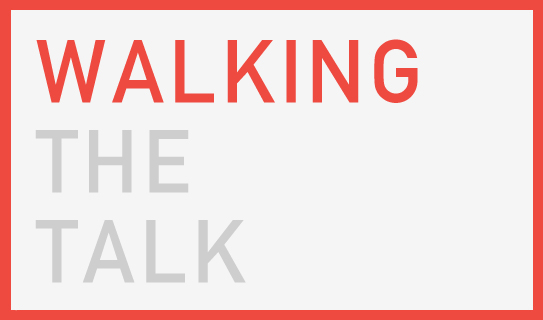
Aligning your commodity brand’s existence with a cause can give you strong brand positioning, if done truthfully. Will Young, founder and president of Sydney-based Campos Coffee, states his reason for a purpose- and cause-oriented brand in a company video: “If we are not in it for good, then there is no reason to wake up every morning and go to work.” His words would not be as powerful if Campos Coffee had not demonstrated its commitment to ethics and philanthropy in coffee by being a Fair Trade Certified organization that calls itself “Direct Trade” by improving education and living standards of the communities with which it works.
There is a powerful reason his approach works. Over the past five years, it has become somewhat of a staple for startups founded by millennials to identify a social cause that can be activated in an authentic way to manifest that the purpose of a product or service goes deeper than solely generating sales. “Purpose” is ingrained in their thinking. Millennials’ emphasis on purpose is probably why there is even a startup, Pledge 1%, to foster startups that seek to commit 1% of their equity, product, profit or time to charity. As Pledge 1% CEO Amy Lesnick told Fast Company: “In 15 years we might not even exist, as early-stage philanthropy will be as common as setting aside equity for future employees.”
The best way to tap into the cause-related marketing trend is to think unselfishly. If you are an entrepreneur considering selling any product, whether a commodity or not, ask yourself why it matters to bring it into this world at this very point in time (and for the long term), and why your audience will deeply care about an often otherwise labeled “so what?” product.
One brand that has answered this question in a unique way is the Package Free Shop. It started as a commodity store (wait, a store just by itself is seen as a commodity by many today!) that specializes in selling commodities such as toothbrushes, razors, soap, bags, laundry detergent, etc. The Package Free Shop is 100% cause-based, selling reusable alternatives to single-use, disposable commodities while teaching customers how to live a “zero-waste life.”
Also ask yourself what your brand will be giving back. Can you identify a social cause that can be activated in an authentic way to demonstrate that the purpose of your product/service goes deeper than solely generating sales? That is the easiest way.
Research shows how much consumers value brands that support charitable causes. A recent cause marketing survey conducted by research firm Toluna showed that 39% of consumers buy into integrated cause strategies such as the “sell one, donate one” model used by TOMS Shoes. The majority of consumers actively seek out brands that donate to causes and say that they would be more likely to purchase a brand that supports a shared cause, according to the survey. Millennials top that list, with 49% seeking out cause brands.
Buy-one-give-one marketing is just one of the many ways brands are connecting with a cause. Here are some other creative ways startups are giving back and connecting their cause with a target audience’s consciousness, outside of the one-for-one model:
- Supporting artisans by ethically sourcing products in developing countries and providing them with steady work at far-better-than-usual pay, along with social programs, education and skills training.
- Giving back 1% to your (shared) cause.
- Creating an eco-friendly, organic, chemical-free, cruelty-free (you name it) model, as long as it supports a shared cause with your audience.
- Equal pay for women, which is sad to have to even mention still today but is unfortunately not available in most companies.
- Form a B Corp, thereby having “to meet rigorous standards of social and environmental performance, accountability, and transparency.”
- Hire staff deemed “unemployable” because of stigmatized health conditions, impairments or felony convictions, and provide a second chance.
- Run a co-op, owned by your employees or your customers.
Of course, no matter what method you choose, your cause has to create true value for the recipients (both the consumer as well as the beneficiary). It’s also important to think all the way to the production of your products; Bennison, for instance, has “mothers in Peru” craft its “one-for-one” line of children’s wear.
If you make cause the center of your brand philosophy, watch out for what I call cause-stamping (think of it as a cousin of greenwashing). The TOMS-branded Apple Watch band (advertised with the marketing message “Give Time”) reflects a clear brand misalignment, despite TOMS’ provision of a year of solar light to a person in need for every band purchased. Unlike TOMS shoes, Apple Watches are clearly a luxury item, priced beyond the reach of many consumers, making the feel-good brand connection seem awkwardly inauthentic when seen on one and the same product. For Apple, it may just have been a sad attempt to buy into a “still-cool” brand ethos in times when the company lacked product innovation headlines.
Today’s exceptional cause-based startups find a truly unique problem to solve by giving back or by applying the otherwise overplayed buy-one-give-one tactic. Here is what you can take with you as you launch, or expand upon, a brand built on the foundation of cause:
- Base the cause on a logical proposition that creates an immediate emotional connection with your target audience.
- Ensure your cause can only be seen as truthful.
- Be certain your cause is extendable enough to expand with you as your product offering diversifies.
- Consider whether the cause directly touches your (current or future) staff’s hearts in order to foster a strong company culture based on purpose.
- Hold yourself accountable and issue progress reports on a yearly basis to ensure you are meeting your own expectations and to spread awareness of the cause (and subsequently your brand).
- Start by giving, then move on to fully embodying the cause in all other aspects of your business — including hiring, location, sourcing and production.
You can read more about how to turn into a cause-based brand, as well as learn about the other 7 traits of today’s admired brands in my book “Bigger Than This – How to turn any venture into an admired brand.”
5 Things I Wish Someone Told Me Before I Became CEO
Yesterday marked the release of my new book, ‘BIGGER THAN this – How to turn any venture into an admired brand’ and I was fortunate enough to have Thrive publish an interview with me coinciding with the book release.
The article turned into a very personal Q and A. Most likely because the interview was conducted while I was vacationing up in the serene Austrian mountains, it turned out so very sincere.
Sharing it with you today as I candidly talk about how I turned my design agency into a brand consultancy and I share the key insights I learned in my close to 2 decades of being a creative entrepreneur. I hope you get something out of it as we start off the year:
“Say No, And Say It Often” Words Of Wisdom With Fabian Geyrhalter, Author Of ‘Bigger Than This’
Bigger Than This
A quick read about the deceptively difficult task of turning your venture into an admired brand.
CATEGORIES:
About Bigger Than This
Video with author Fabian Geyrhalter discussing the book “Bigger Than This.”
CATEGORIES:
What Any Brand Needs To Learn From Amazon’s Physical Bookstore Experience
I just spent an hour at Amazon. Not on Amazon, at Amazon.
As an author with a second book release upon me, I study book marketing up close hence I just had to make a pilgrimage to Los Angeles’ first physical Amazon bookstore. It opened two weeks ago as part of the Westfield Century City Mall‘s universally talked about staggering 1$ Billion re-model (…and we thought retail was dead).

I was doubtful when I initially heard about Amazon going into physical storefronts thereby going back to the business model they once so successfully disrupted many years ago. Well, my doubt was quickly turned into exhilaration as Amazon did not simply open a storefront, they changed the way consumers experience products offline – with a whole lot of help from online insights.
Amazon successfully and holistically transformed what worked online into a physical brand experience. It took full advantage of its massive amounts of data, to my delight. At the AmazonBooks store, you are greeted with shelves titled ‘Highly Rated – 4.8 Stars & Above’ or ‘100 Books to Read in a Lifetime – Our Picks from the Amazon.com List.’ Not surprisingly, it works and it pulls you into a curated, and more importantly, customer-verified, experience. Do you trust that Maggie from the local bookstore has a ‘Staff Pick’ or do you trust hundreds, thousands, millions of readers just like yourself? Sorry, Maggie, I am all up for supporting local stores, but that was an easy pick.
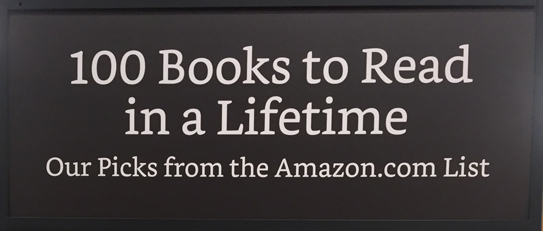
Not so quick though, as Amazon knows it needs to, and should, make the experience a local one. ‘Read Local – Notable and Highly Rated Los Angeles Books’ as well as top-rated books from readers in L.A. are showcased prominently. Another nice touch is Amazon’s integration with the online reader community of Goodreads, albeit logical as Amazon acquired the site in 2013. Still, seeing ‘Goodreads Most-Read Classics’ and ‘Book Club Picks from Goodreads’ adds more intrigue to the books stacked in traditional bookstore style underneath. Each of these components engages, builds trust, and keeps you in the store longer.
But let’s not paint a picture of Amazon showcasing only the proven books, by the biggest authors, on their rather limited shelf-space. You’ll see books of unknown authors, some that are rated only a few times, next to the big sellers. One book particularly stood out (Innovating by Luis Perez-Breva and Nick Fuhrer) as Amazon’s description reads ‘100% of reviewers rated this item 5 stars.’ The book only had 21 reviews in total. This makes me feel like I am discovering something, which is one of the key ingredients of a great book store.
Amazon also picks customer reviews to showcase, rather than the author’s book description, or an Amazon editorial review, which makes the experience even more personable.
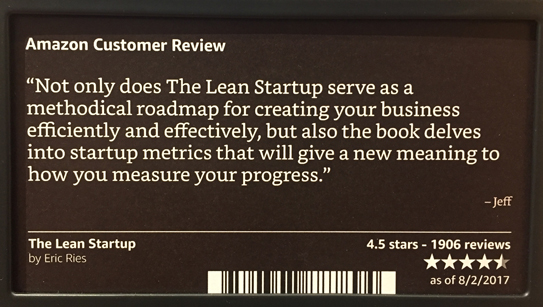
The last store curation effort that made my heart speed up was the huge shelf-space dedicated to ‘If you like this, you’ll love these.’ A key component of the Amazon.com shopping experience, seeing a book you liked on a shelf with six you never heard of next to them, suggesting that you’ll love them is a sure-fire win in any customer browsing experience.
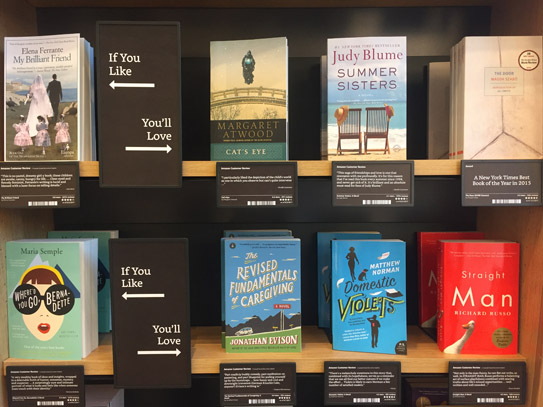
Besides taking away that Amazon has nailed its data integration into its retail environment – not to anyone’s surprise – what can you, as a CMO of a brand or as a startup entrepreneur learn and immediately utilize from its success?
Map your online customer brand experience, then take it offline.
It feels upside down, and precisely that is Amazon’s amazing ‘Zag’ in this instance. How do users behave on your site, what content do they read, what call-to-actions do they skip, which offerings do they spend the most time on, and so on and so forth. Study it. It’s there, you just have to start digging into it.
Then take that data and make use of it in all the ways you conduct business offline. As many of you don’t have retail stores that you can start experimenting with, you may think this is not applicable to your brand. Think again: sales presentations, prospect case study conversations, tradeshow experience designs, new product launch considerations, brand initiative ideas, brand narrative adjustments – you name it. That online journey can be a game-changer in the way you engage with your customer/consumer/member everywhere else.
Much has been said about leveraging latent data and creating actionable new data points for brands of all sizes to utilize, but the essence of what Amazon did is actually rather simple at heart: Study the trail your online users leave behind and use it to educate a new or revised, deeply educated and highly personalized offline brand experience.
What we learn from AmazonBooks is that these insights can even be used to craft a brand narrative for a new brand extension: Translating what works naturally online (‘if you like this – you may like that‘ as an example) for their brand and making it work as a novelty in an offline experience that is 100% true to Amazon’s brand essence. It’s not just connecting data for increased sales, it is doing so in a way that is intrinsically true to the core brand philosophy.
Amazon’s user journeys helped create an offline sub-brand. It may be time to look at your brand’s online data, create your user journeys and translate them into successful offline experiences. It will re-affirm, or re-educate your brand’s essence, or perhaps it will even inspire you to launch a new brand extension.
Until then, you can find me at Amazon as on Amazon is just too one-dimensional and old-fashioned.
How To Share Your Brand’s Offering – Brilliant Brand Messaging Lessons From Acorns And Emojis
I entered a contest. Not a design competition, but a simple consumer contest.
And that matters because, really, who enters contests? We are all busy people. Especially a man in his early 40’s who is not bootstrapping his life, especially not aiming for a $20 gift card.* Well, I did, and here is why: While procrastinating – it happens to the best of us – in-between important and time-sensitive client workshop preparation tasks, the following E-Mail popped up in my ‘Everything Else’ area of my Inbox (yes, it accurately landed on the opposite side of my ‘Important’ E-Mails):
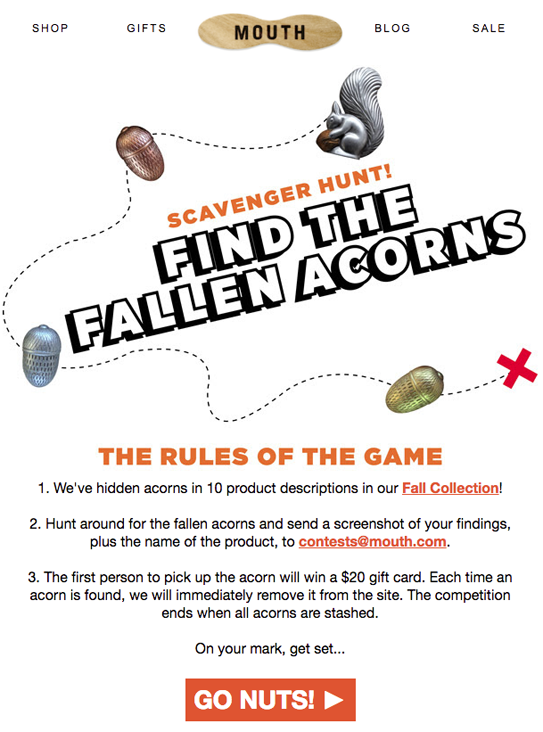
They got me with the squirrel.
And the time-sensitive part.
So, nuts I went.
I went nuts not to find that silly acorn, well that too, but over the genius, or the team of geniuses, who were briefed to get people to click-through their Fall Collection of indie food products. Instead of a beautiful collage of their products, or by cramming in as many different products as they can, they created a ‘fallen acorns scavenger hunt’ thereby ensuring people had to click through a lot of their new products thereby familiarizing themselves with a variety of offerings not unlike they would scrolling through an Instagram feed.
I did click on one product (‘brand research – had to make sure it worked before I wrote about it’) and saw an acorn. That’s when my brain switched from ‘marketing technique intrigue’ straight to ‘happy acorns hunt participant.’
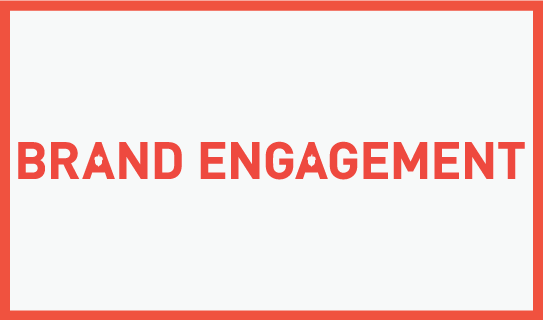
If you can get the E-Mail recipient who is the least-likely to partake in a contest, even less likely to engage in reviewing products he is not interested in purchasing at the time (but will likely recall once the holidays are rolling around) to click through your E-Mail and participate in your brand in the middle of a workday, you clearly did something very right.
Back in July, the San Francisco Museum of Modern Art (SFMOMA) launched their way of successfully distracting people from their work by asking them to text them an emoji. The service sends a related art piece of their vast collection in return of you texting ‘send me [insert any emoji, keyword or color of choice]’ to their number (572-51, if you are curious).
Here was my wife’s interaction at the time. I immediately tried it myself.
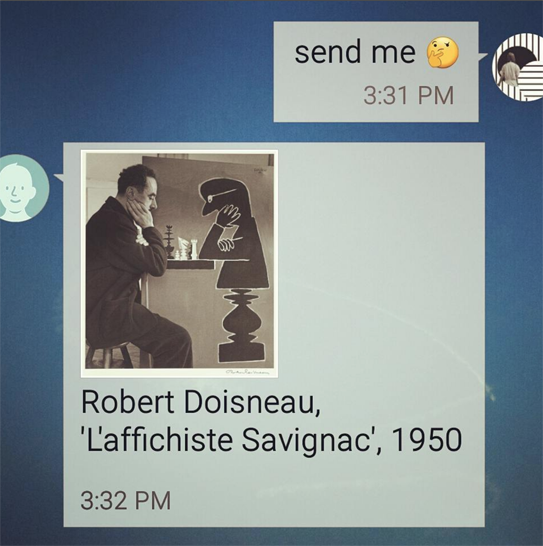
Intrigued? Of course.
You are not alone. In one single week they received – hold your breath – 2 million texts of people hungry to see art that was relevant to their current mood or personal interest. For the museum, it was an answer to the question ‘How do we get people to see all the art (95% of the collection) we simply can not show on the floors of our museum?’ What they got in return was so much more than interest in art. They created brand awareness, and brand love, (and collected millions of phone numbers) via a simple idea and an auto-reply powered by good data.
It’s time for us to gamify our brand experiences, especially the ones that are being sent via E-Mail to thousands of opted-in customers like it was the case in MOUTH’s acorn hunt example. E-mail has a median return on investment (ROI) of 122% – more than four times higher than other marketing formats, including social media, direct mail, and paid search. Combine that with an audience of hungry, active users that are ready to act, and yet you plug out one templated E-Mail promoting your product after another.
Stop.
Sit back and think about why the recipient would take action.
- Is it a question you provide a ‘must-know’ answer to?
- Is it an ‘act-now’ (and now only) deal?
- Is it a unique gamified experience?
- Is it triggering intrigue, or a feeling of exclusivity, that causes actions?
Send less. Think more. Gain real engagement.
Take a step back from your analytics tools, grab a few fellow team members, a conference room, and a highlighter and take over the good old whiteboard. Your ROI will soar and your brand will thank you for not being a spam brand, but an engaging brand.
Let’s thank a bunch of acorns and emojis for that.
*Side note to that acorns hunt E-Mail example: Getting a $20 gift card for a minimum $100 order, so a 20% Off Your Next Order ‘gift’ is a rather sad incentive (why not truly give $20 gift cards?) that can quickly turn potential fan excitement to immediate bummer brand reclusive. I noticed that after my hunt was over.
